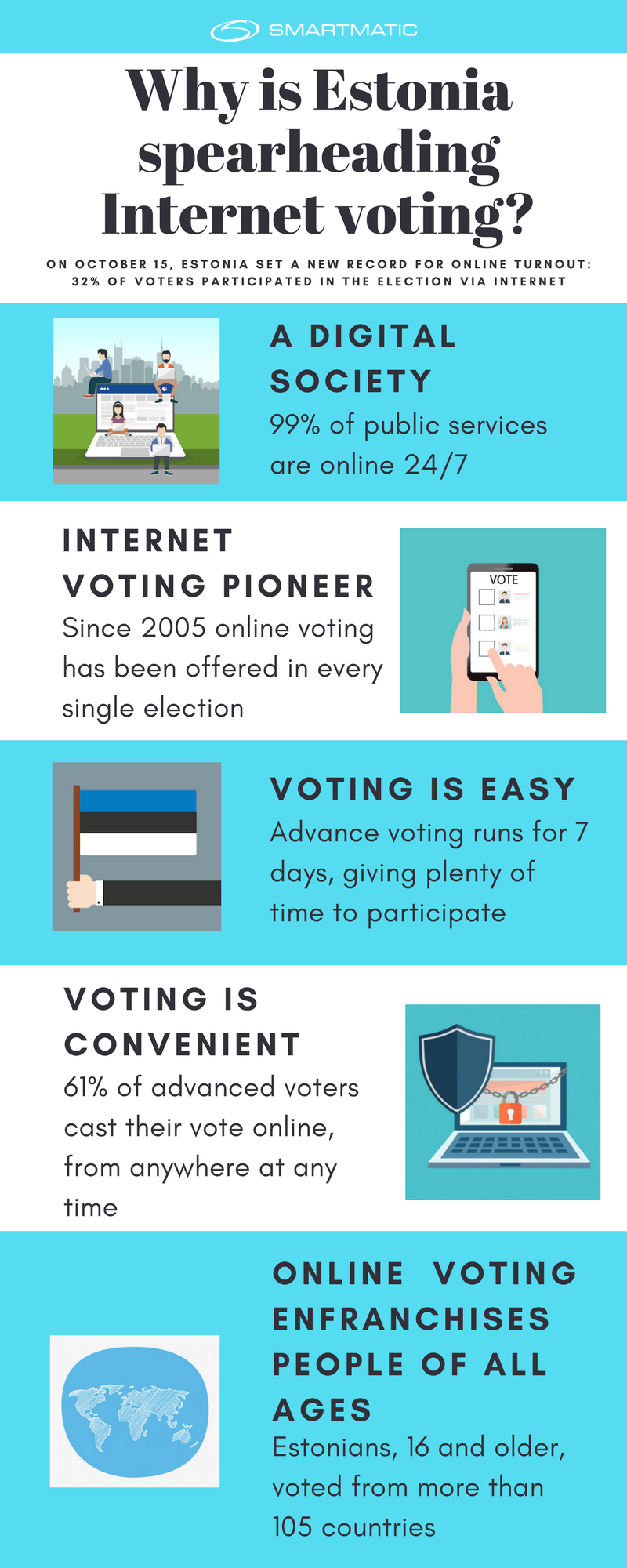In the last local elections, held on October 15, Estonia set a new record for online voting. 31.68 percent of the voters, more than ever before (since 2005, when Internet voting was first implemented in the Baltic country) cast their ballots electronically.
According to the Estonian National Electoral Committee and the State Electoral Office, 27.8 percent of the voting population (306,508 voters) took part in the advance poll of local government council elections, from which 186,034 used e-voting. Overall 587,134 people (53.4%) of voting-age residents voted in the Estonian local elections this year.

Approximately a third of voters have used the e-voting opportunity at elections so far. Voters using the online voting system made up 30.5 percent of voters at parliamentary elections in 2015. However, this time, the participation grew to 31.7 percent (9,543 more voters than in 2015), totaling more people who voted digitally than in any previous elections.
So, looking at these statistics, people wonder what the reasons behind Estonia’s unstoppable growing records with online voting are. Let’s review some.
- Estonia has become a proud digital society, where 99% of the public services are available online 24/7. Therefore, voters trust e-government solutions and election technology, including Internet voting.
- Estonia is a pioneer of e-voting. It was the first nation to hold legally binding general elections over the Internet and, it has kept improving and updating its solution.
- The system has been adapted to perform similarly to regular voting. “I-voting adheres to the election acts, general election principles and customs.”
- E-voting has been gradually deployed since 2005. It works in parallel with traditional voting systems. “E-voting is an option rather than a mandate in Estonia,” noted Forbes this year.
- The process is secure, simple, convenient and citizens can vote as many times as they like up to election day, with only the final vote counting.
- A properly implemented system can make voting easier, more secure, more auditable and more accessible. “It can engage overseas voters and other voters who face difficulties to go to a polling location to vote, such as voters with reduced mobility,” explains the Centre of Excellence in Internet Voting.
- As an Internet voting pioneer, the system has been met with praise but also with close scrutiny. Criticism, however, has not significantly impacted the attitude of Estonian toward e-voting, as noted earlier this year.
